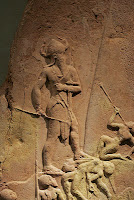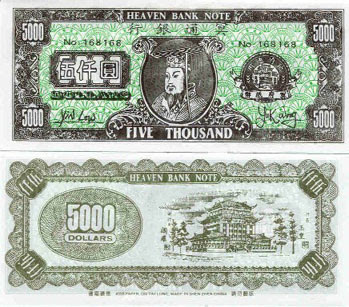Al-Uzza, Al-Lat and Menat.
The Book of Idols (Kitab Al-Asnam) by Hisham Ibn Al-Kalbi
The Book of Idols (Arabic: Kitab al-Asnam) was written by the Arab scholar Hisham Ibn Al-Kalbi (737 – 819). It describes the gods and rites of Arab religion.
From the pages of this book modern pagans have extracted a triple goddess: Al-Uzza, Al-Lat and Menat.
The Triple Goddess, as described by modern Pagans was originally a construct of Robert Grave's imagination; an overturning of the Christian God the father, son and Holy Ghost, and an invocation to his own personal muse. The triple goddess in the form of the triple muse has a very long history which came down to Robert Graves via the Neoplatonists, and then back to the web in its most simplified form as fact.
Al-Uzza, Al-Lat and Menat had their origins in Mesopotamian mythology.
But monotheism demands that there is no God but the One True God, and for unfathomable reasons this one true deity is imaged as male. There then follows the inevitable destruction of shrines, and murder of worshippers of the wrong religion...
"Come not to Allat, for God hath doomed her to destruction;
How can you stand by one which doth not triumph?
Verily that which, when set on fire, resisted not the flames,
Nor saved her stones, is inglorious and worthless.
Hence when the Apostle in your place shall arrive
And then leave, not one of her votaries shall be left."
Acording to Hisham Ibn Al-Kalbi:
- Manat
She was known as a Goddess of Death and imaged as a woman bringing a person to his or her grave. She holds in her hand the cup of death (unpleasent images of the Royal burial ground of Ur and Queen Pu-abi come to mind) the symbols at the bottom of her gown spell her name in Sabaic (which does not use vowels and is written right to left), M-n-t.
She was particularly worshipped as a black stone at Quidaid, near Mecca and was connected with the great pilgrimage, as her sanctuary was the starting point for several tribes. She is known from Nabatean inscriptions, and tombs were placed under her protection, asking her to curse violators.
-Allat.
John Selden believed that Allat or Alilat was the same as the Persian Mitra (very close to name Mithras) and this is why there is supposedly a connection between Mithras and oaths- as the foundation of business and trade. Mithra is the Zoroastrian divinity (yazata) of covenant and oath. In addition to being the divinity of contracts, Mithra is also a judicial figure, an all-seeing protector of Truth.
It is also said that the sun in Arabia was called Shams (very close to Babylonian Shamash) and considered feminine. The sun sees all and so is a perfect emblem for truth. The sun symbol may represent an aspect of Al-Lat.
Her sanctuary was in the town of Ta'if, east of Mecca, and her symbol is the crescent moon (sometimes shown with the sun disk resting in its crescent, she bears a sheaf of wheat; and in her hand she holds a small lump of frankincense, as her emblem is found carved on many incense-holders.
-Al-Uzza.
Isaac of Antioch (5th century CE) calls her Beltis ("Lady", a title shared by many other Semitic Goddesses), and Kaukabta, "the Star". He also says that women would invoke Al-Uzza from the rooftops, a form of worship appropriate to a Star Goddess.
Epiphanius of the 4th century CE calls her the mother of Dusares, the local mountain god, calling her by the title Chaamu or Chalmous, meaning "young girl or virgin".
Yeman was originally Sabean (the Kingdom of Saba or Sheba) worship of Al-Uzza spread all over Arabia. She had a sanctuary in a valley on the road from Mecca, comprising three acacia trees in which she was said to descend.
Al-Uzza and Allat are now 'the daughters of Mohammed':
How close is that in sound to Al Lat?
The planet that most corresponds in sound to uzza is Zuhra (Venus...).
Al-Zhura/ Al-Uzza.
Who knows!
The Book of Idols (Arabic: Kitab al-Asnam) was written by the Arab scholar Hisham Ibn Al-Kalbi (737 – 819). It describes the gods and rites of Arab religion.
From the pages of this book modern pagans have extracted a triple goddess: Al-Uzza, Al-Lat and Menat.
The Triple Goddess, as described by modern Pagans was originally a construct of Robert Grave's imagination; an overturning of the Christian God the father, son and Holy Ghost, and an invocation to his own personal muse. The triple goddess in the form of the triple muse has a very long history which came down to Robert Graves via the Neoplatonists, and then back to the web in its most simplified form as fact.
Al-Uzza, Al-Lat and Menat had their origins in Mesopotamian mythology.
But monotheism demands that there is no God but the One True God, and for unfathomable reasons this one true deity is imaged as male. There then follows the inevitable destruction of shrines, and murder of worshippers of the wrong religion...
"Come not to Allat, for God hath doomed her to destruction;
How can you stand by one which doth not triumph?
Verily that which, when set on fire, resisted not the flames,
Nor saved her stones, is inglorious and worthless.
Hence when the Apostle in your place shall arrive
And then leave, not one of her votaries shall be left."
Acording to Hisham Ibn Al-Kalbi:
- Manat
The 'oldest' in terms of durration of worship was known as Manah. The Arabs used to name [their children] 'Abd-Manah and Zayd-Manah. Manah was erected on the seashore in the vicinity of al-Mushallal in Qudayd, between Medina and Mecca. All the Arabs used to venerate her and sacrifice before her. [In particular] the Aws and the Khazraj, as well as the inhabitants of Medina and Mecca and their vicinities, used to venerate Manah, sacrifice before her, and bring unto her their offerings.As I don't read Arabic I can't say how correct this is, but according to In The Name of Allan.org Al-Manat or Manawayat derives her name from Arabic maniya, "fate, destruction, doom, death", or menata, "part, portion, that which is allotted", "Time", the Death or Fate goddess.
She was known as a Goddess of Death and imaged as a woman bringing a person to his or her grave. She holds in her hand the cup of death (unpleasent images of the Royal burial ground of Ur and Queen Pu-abi come to mind) the symbols at the bottom of her gown spell her name in Sabaic (which does not use vowels and is written right to left), M-n-t.
She was particularly worshipped as a black stone at Quidaid, near Mecca and was connected with the great pilgrimage, as her sanctuary was the starting point for several tribes. She is known from Nabatean inscriptions, and tombs were placed under her protection, asking her to curse violators.
-Allat.
They then adopted Allat as their goddess. Allat stood in al-Ta'if, and was more recent than Manah. She was a cubic rock beside which a certain Jew used to prepare his barley porridge (sawiq). Her custody was in the hands of the banu-'Attab ibn-Malik of the Thaqif, who had built an edifice over her. The Quraysh, as well as all the Arabs, were wont to venerate Allat. They also used to name their children after her, calling them Zayd-Allat and Taym-Allat.Allat's name may be a contraction of al-Illahat, "the Goddess". She is mentioned by Herodotus as Alilat whom he thinks is Urania, associated with the heavens and telling the future from observing the paths of the stars. Herodotus tells a story of how the Arabs swore an oath in blood (they cut their middle fingers) and in the names of Dionysus and Urania to fulfill their bargain.
She stood in the place of the left-hand side minaret of the present-day mosque of al-Ta'if.
John Selden believed that Allat or Alilat was the same as the Persian Mitra (very close to name Mithras) and this is why there is supposedly a connection between Mithras and oaths- as the foundation of business and trade. Mithra is the Zoroastrian divinity (yazata) of covenant and oath. In addition to being the divinity of contracts, Mithra is also a judicial figure, an all-seeing protector of Truth.
It is also said that the sun in Arabia was called Shams (very close to Babylonian Shamash) and considered feminine. The sun sees all and so is a perfect emblem for truth. The sun symbol may represent an aspect of Al-Lat.
Her sanctuary was in the town of Ta'if, east of Mecca, and her symbol is the crescent moon (sometimes shown with the sun disk resting in its crescent, she bears a sheaf of wheat; and in her hand she holds a small lump of frankincense, as her emblem is found carved on many incense-holders.
-Al-Uzza.
They then adopted al-'Uzza as their goddess. She is, in point of time, more recent than either Allat or Manah, since I have heard that the Arabs named their children after the latter two before they named them after al-'Uzza.Al-Uzza, was "the Strong One", "The Most Mighty. Her statue once stood in a valley in Nakhlat al-Sha'miyah. She had a temple at Petra (though which one that was has not been determined), and may have been the patron Goddess of that city.
The person who introduced al-'Uzza was Zilim ibn-As'ad. Her idol was situated in a valley in Nakhlat al-Sha'miyah called Hurad, alongside al-Ghumayr' to the right of the road from Mecca to al-'Iraq, above Dhat-Irq and nine miles from al-Bustin. Over her [Zalim] built a house called Buss in which the people used to receive oracular communications. The Arabs as well as the Quraysh were wont to name their children 'Abd-al-'Uzza. Furthermore al-'Uzza was the greatest idol among the Quraysh. They used to journey to her, offer gifts unto her, and seek her favours through sacrifice.
We have been told that the Apostle of God once mentioned al-Uzza saying, "I have offered a white sheep to al-'Uzza, while I was a follower of the religion of my people."
The Quraysh were wont to circumambulate the Ka'bah and say:
"By Allat and al-'Uzza,
And Manah, the third idol besides.
Verily they are the most exalted females
Whose intercession is to be sought."
Isaac of Antioch (5th century CE) calls her Beltis ("Lady", a title shared by many other Semitic Goddesses), and Kaukabta, "the Star". He also says that women would invoke Al-Uzza from the rooftops, a form of worship appropriate to a Star Goddess.
Epiphanius of the 4th century CE calls her the mother of Dusares, the local mountain god, calling her by the title Chaamu or Chalmous, meaning "young girl or virgin".
Yeman was originally Sabean (the Kingdom of Saba or Sheba) worship of Al-Uzza spread all over Arabia. She had a sanctuary in a valley on the road from Mecca, comprising three acacia trees in which she was said to descend.
Al-Uzza and Allat are now 'the daughters of Mohammed':
"Despite the 'Islamization' of pagan Arabian religion, al Lat and al Uzza appear on top of almost every mosque and on the flags of several 'Muslim' countries. These are the Crescent (al Lat) and the Star/ Planet"This is difficult to sort out, the pre-Islamic name for the crescent moon is Hilal -which would make the crescent Al Hilal.
How close is that in sound to Al Lat?
The planet that most corresponds in sound to uzza is Zuhra (Venus...).
Al-Zhura/ Al-Uzza.
Who knows!

